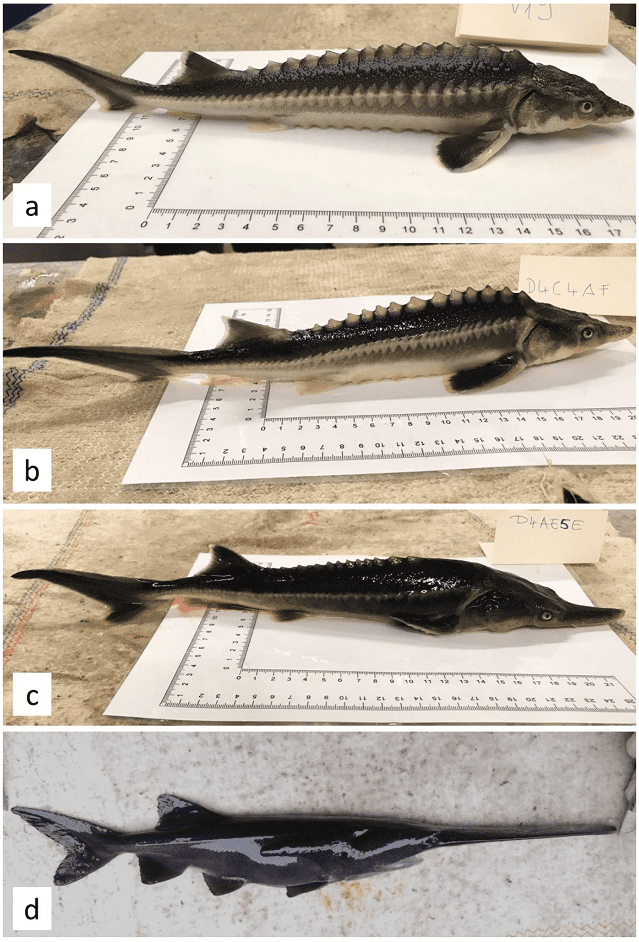
While they were investigating the possibility of breeding sturgeons and paddlefish in captivity, scientists accidentally created a hybrid of the two. The resulting hybrid, which I guess you could call a “Sturddlefish”, shares characteristics from both species
The Russian sturgeon and the American paddlefish have quite a few things in common. They’re both known as living fossils due to their ancient lineage and extremely slow rate of evolution. Unfortunately, both are also critically endangered.
Sturgeons can live for up to 100 years and do not reproduce annually, which means they take many years to recover from any population declines. This makes them extremely vulnerable to overfishing — and there’s plenty of that. Either legally or illegally, many people venture into the Caspian sea and other known sturgeon habitats on the prowl for their prized caviar, which can fetch up to $10,000/kg.
Paddlefish have a gray, shark-like body with a deeply forked tail, and a long, flat blade-like snout that resembles a kitchen spatula. Because both sturgeons and paddlefish belong to the same group of fish called Acipenseriforms, many turn to paddlefish caviar as a substitute for the sturgeon variety. Needless to say, this adds extra pressure on an endangered species that has been decimated by extensive commercial fishing and habitat loss.
Given two fish’s precarious status, researchers in Hungary used some alternative breeding techniques in order to see how the offspring of the two species would fair in captivity.
The researchers were experimenting with gynogenesis — an asexual form of reproduction that can produce offspring from eggs and sperm without the latter actually contributing any DNA — when they accidentally used untreated paddlefish sperm to fertilize a sturgeon egg. The American paddlefish sperm was meant to act as a control for the gynogenesis trial, but it turned into a new experiment in its own right.
Against all odds, the eggs hatched into hybridized fish. The sturddlefish was born.

Some of these hybrids looked more like sturgeons than paddlefish due to having twice as much maternal DNA. Those who had the same amount of maternal and paternal DNA had an equal mix of sturgeon and paddlefish features.
The researchers led by Attila Mozsár from the Research Institute for Fisheries and Aquaculture in Hungary described their findings in the journal Genes, writing that:
“This was the first successful hybridization between these two species and between members of the family Acipenseridae and Polyodontidae.”
The fertilization resulted in hundreds of hybrid eggs, most of which survived 30 days after hatching.
But although this was a happy accident, the authors of the study vowed to never repeat it. Releasing such a hybrid into the wild might cause harm to ecosystems. There’s really no way of telling what might happen. In any event, these human-made hybrids are sterile, so they wouldn’t have been able to reproduce in the wild anyway.









